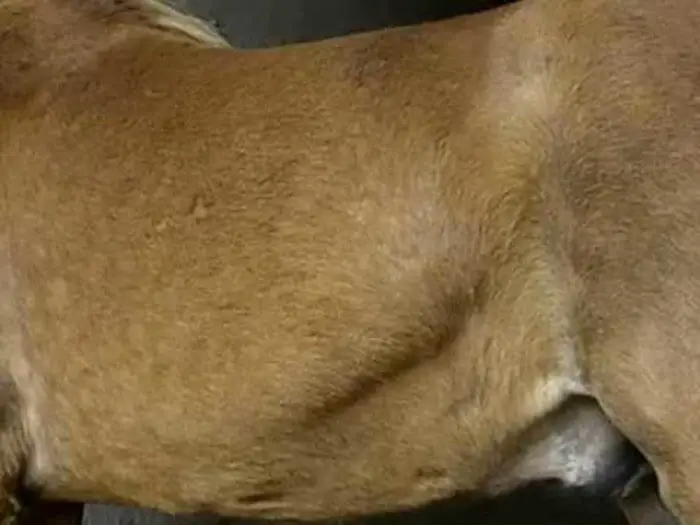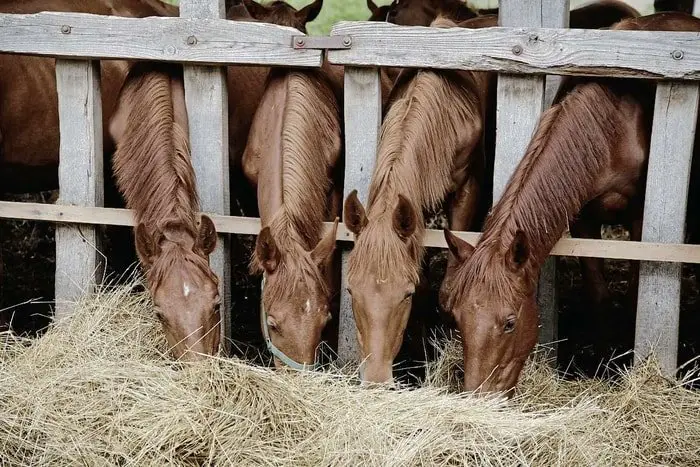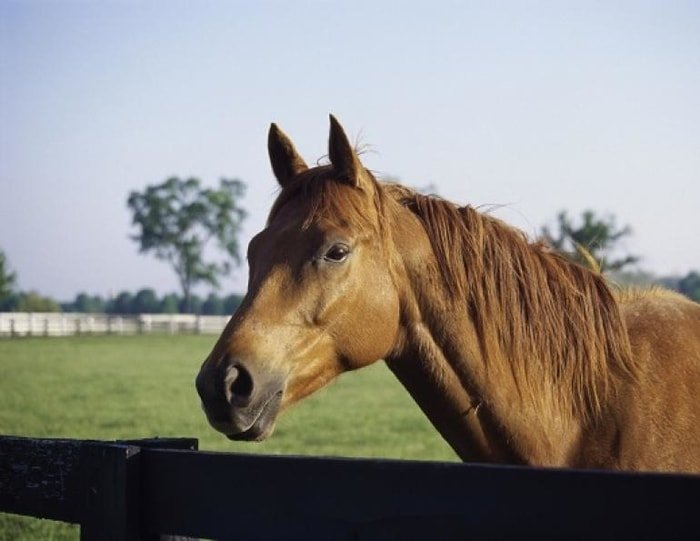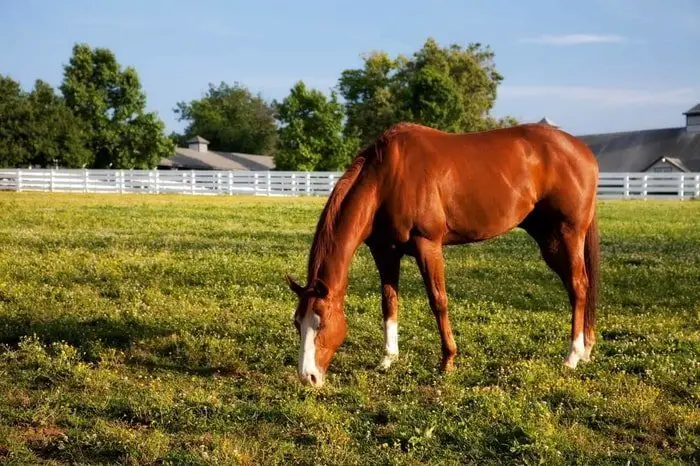Heaves in horses, more frequently referred to as “Chronic obstructive pulmonary disease” or COPD, is one of the oldest documented diseases of the horse. There is considerable evidence implicating allergic reactions in most affected animals. COPD is rarely encountered in tropical or subtropical climates where animals spend most of their time at grass. In temperate climates, COPD is closely associated with housing and the presence of fungal spores in the air.
Paradoxically, some horses appear to develop Heaves while at pasture, this condition is thought to be an allergic respiratory disease caused by a reaction of pollen. The clinical manifestation of COPD represents an end-stage, which may result from a combination of different aetiologies of which the most prominent is bronchiolitis, epithelial hyperplasia, goblet cell metaplasia, and inflammatory cell infiltration. Respiratory compromise results from bronchospasm of the hyper-reactive airways, mucous plugging, mucous thickening, and peribronchiolar fibrosis.

Diagnosis of Heaves in Horses
Clinical examination of cases of heaves will reveal increased breathing effort with increased inspiratory sounds, which in advanced cases may progress to wheezing, crepitations, and rhonchi. Signs may become more evident when respiratory demands are greater such as following exercise, occlusion of one nostril, and rebreathing of exhaled air. A double expiratory effort and the presence of a “heaves line” ( a band of increased abdominal musculature) are likely to be seen in severe cases.

Endoscopic examination and bronchoalveolar lavage (BAL) are particularly useful diagnostic aids in the investigation of chronic respiratory disease. In cases of COPD, the accumulation of mucopurulent material may be seen in the trachea and bronchi, and bronchial collapse may also be seen. Large numbers of neutrophils are frequently seen in the BAL fluid in COPD.
A simple quantitative assessment of lung infection that can be used is the measurement of intra-oesophageal pressure changes, which represent the transpleural pressure swing (DPpl max). In normal healthy horses at rest, the DPpl max should be between 2 and 4 cmH20. The measurement of arterial blood gases may also be performed, a PaO2 of less than 80 mmHg is characteristic of COPD.

The response to treatment can also be diagnostically useful. Bronchodilators such as clenbuterol (0.8 µg/kg IV or 0.03 mg in 10 mL nebulized) or atropine (4 µg/kg IV by slow injection) should provide some remission of signs within 30 min.
Treatment of Heaves in Horses
- Bronchodilators, mucolytics, and anti-inflammatory agents may be used to reduce the respiratory compromise resulting from COPD.
- In cases where secondary bacterial infections are present, the use of antibiotics is indicated, and wherever possible, the antibiotic should be chosen following the culture and sensitivity of the infectious agent.
- Bronchodilators are most effective in cases that have been diagnosed early and slow, with no chronic changes.
- Beta 2 -Adrenergic antagonists such as clenbuterol (0.8 µ/kg PO or IV b.i.d.) are of use for diagnosis and for short-term therapy.
- The use of corticosteroids is of value in some cases of COPD. in cases where there has been a sudden onset of severe respiratory embarrassment, dexamethasone (0.05-0.2 mg/kg IV) should be given.
- Longer-term treatment using dexamethasone may also be attempted with daily doses of 0.025-0.05 mg/kg PO daily, although the attendant risks of laminitis and other problems do not make this the treatment of choice.

Control and Prevention of COPD
- Considerable research has highlighted the role of the environment in the prevention and control of this condition.
- The amount of dust, fungal spores, and other respiratory irritants and allergens will depend on a number of environmental factors, including ventilation, bedding materials, and feedstuffs.
- Adequate ventilation is important to provide a source of clean air and to avoid the dust and spores in the environment, although even the best-ventilated stables may permit exposure to dangerous levels of airborne contaminants.
- Straw bedding is an important potential source of fungal spores. “Dust-free” alternative to straw includes wood shavings, shredded paper, peat, and sawdust.

- Hay, even when well prepared, maybe another important source of fungal spores.
- The use of barn-dried hay (artificially dried), soaked hay (complete immersion in water for at least 8 hr), silage or haylage will reduce this exposure.
- It is important to remember that even slight exposure to allergens can undo the “dust-free” management changes and so adjacent stalls or boxes and shared airspaces must also be considered as potential sources of contamination.
- In the management of COPD, the avoidance of any housing by training out the horse to grass remains the most potent method of prevention and control.